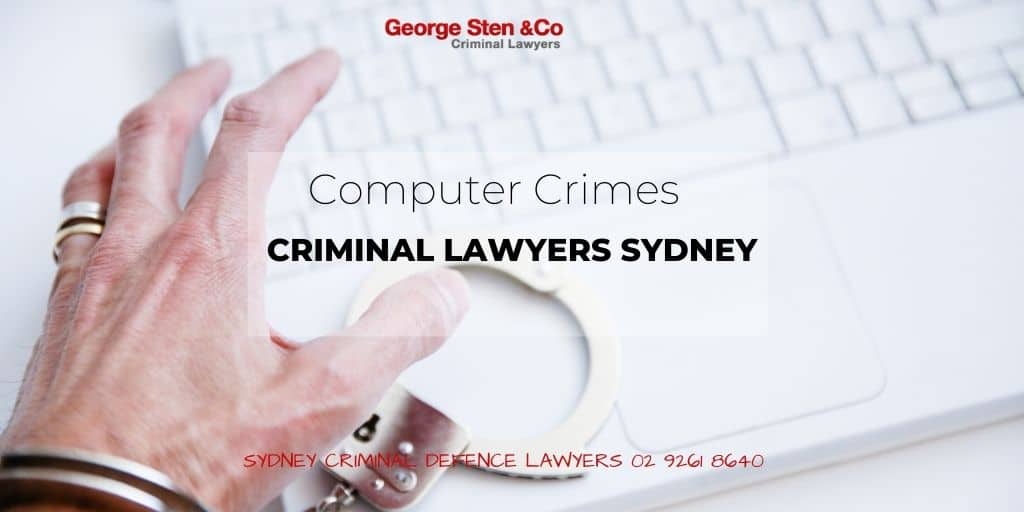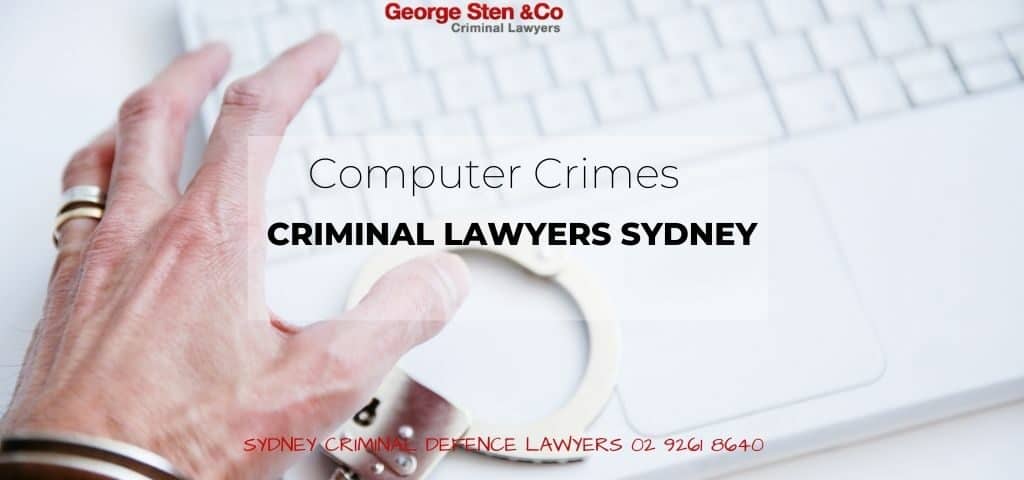- Highest Quality Legal Defence
- 0412 423 569
- 24 hr service
- (02) 9261 8640 緊急案件!Urgent Call
- Make Booking
Using A Carriage Service To Menace Harass Or Offend – Lawyers NSW

Using A Carriage Service To Menace Harass Or Offend Charges
If you have been charged with using a carriage service to menace, harass or offend you need to speak with a Criminal Lawyer immediately the Criminal Lawyers at George Sten are available for urgent telephone advise 24 hours a day. George Sten & Co has over 50 years experience in Criminal Law. Don’t take chances with your reputation, future or livelihood. George Sten & Co are one of Sydney’s leading criminal law firms. We only practice in Criminal Law. If you have been arrested for a computer related crime talk to our Criminal Defence Lawyers before you agree to a police interview. This could be the difference to your out come in court.
Using A Carriage Service To Menace, Harass Or Offend Offence
A person commits an offence if they use a carriage service to menace, harass or cause offence, according to the Criminal Code Act 1995 (Cth). A carriage service is defined in the Telecommunications Act 1997 (Cth) as ‘a service for carrying communications by means for guided and/or unguided electromagnetic energy’, pursuant to s7 of the Act. In simple terms, this could be taken to refer to social media communications, emails, text messages and calls, and it is important to note that this is given quite a broad definition.
According to s474.17 of the Criminal Code Act 1995 (Cth), it is an offence if a person uses a carriage service (s474.17(1)(a)); ‘and the person does so in a way (whether by the method of use or the content of a communication, or both) that reasonable persons would regard as being, in all circumstances, menacing, harassing or offensive’ (s474.17(1)(b)). This offence has the penalty of imprisonment listed as three years.
Examples of such behaviour could give regard to the method or content of the communication. For example, a harassing phone call could extend from a bombardment of incessant calls or messages, or offensive or threatening content. However, given the broadness of the provision itself, there is a wide net cast, meaning that other types of behaviour such as domestic violence, threats of harm or incessant messaging could also fall within the ambit of this charge.
Harassing in this sense is taken to refer to a repeated course of conduct, however the content and conduct of the exchange could also render this a harassing exchange. For example, the time and circumstances of a phone call may be taken into account.
Similarly, menacing behaviour focuses on this exertion of power, but with a particular emphasis on the apprehension of safety felt by the person on the receiving end of the communication. This does not have to be as explicitly harm-threatening behaviour, and can also rely on the message being relayed to the target.
As noted in the provision above, the offensiveness of the content is judged according to the ‘reasonable person’ standard, which in law has a specific meaning. A reasonable person is contemporary and has some demonstrable tolerance and understanding. Basically, this goes to the societal attitudes of what would typically be considered appropriate by the public at large.
Evidence of these types of conduct largely extends from the digital fingerprint left behind from the exchange. Carriage service providers, such as your phone company, are often required to assist police in inquiries regarding phone records in this circumstance.

There remains a disclaimer that contents of this information page are not legal advice and if you believe you may be charged with this offence, you should contact our firm using the details provided on this site to seek appropriate guidance. As a general recommendation, it is good sense to cease contact with a person if you have had accusations levelled against you, as the situation could escalate and the police may need to take action, such as obtaining an AVO, in order to protect the recipient of the communication.
As with all criminal charges, the police must prove the elements of the offence outlined above beyond a reasonable doubt, which is the standard of proof relevant for this offence. This means that the police have to prove that a carriage service was used and that the communication, with regard to all circumstances of the exchange, was demonstrably menacing, harassing or offensive.
The Commonwealth Director of Public Prosecutions cites ‘using a carriage service to menace, harass or cause offence’ as a ‘commonly used offence’. As discussed above, due to the broad scope of this offence, there are many acts that could fall within its ambit and therefore a wide range of behaviours may be construed as offensive. For more of an idea about how the law construes threats, it is also worth noting the description of ‘documents containing threats’ in the Crimes Act 1900 (NSW), as pursuant to s31(2), there is a similar requirement to that outlined above regarding the indirectness of the threat in not needing to be delivered specifically to the intended target, as long as this communication is conveyed with the requisite intention.
While the maximum penalty is listed as three years, it is possible that there may be flexibility in the dealings with the sentencing, with options available for the penalty to potentially be downgraded depending on the circumstances and findings in the case.
If you have reason to believe that you may be charged with an offence related to the use of a carriage service to menace, harass or offend, or you have already been charged, contact one of our criminal lawyers. Based in Sydney, our legal team will protect your reputation and work to clear your name. We can provide expert advice to ensure that the matter is dealt with quickly and thoroughly. Call our Sydney Office Today 02 9261 8640

